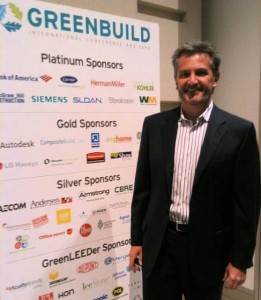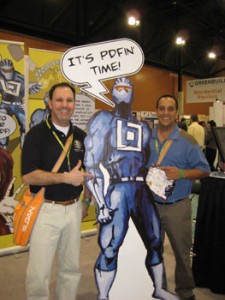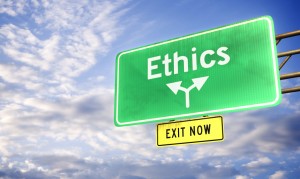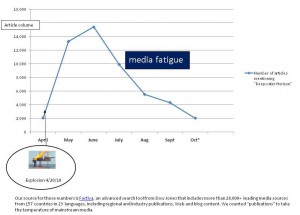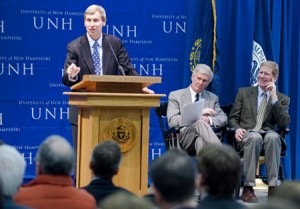Greenpeace has done its absolute best to be an epic pain in corporate world’s collective butt since 1971. So when Greenpeace says the corporate world is doing something right, there is an upside for said corporate world. After all, when just about every company in the world wants a good environmental record, who’s a more credible source than your most intractable green enemy?
 A few days ago, Greenpeace released its third report on the computer industry’s green quotient. This year’s survey covered almost all of the heavy wood in the tech hardware industry: Acer, Asus, Dell, Fujitsu, HCL, HP, Lenovo, LG, Motorola, Nokia, Panasonic, Blackberry, Samsung, Sharp, Sony Ericsson, Sony, Toshiba and Wipro. (Not Apple, though. The two of them have been like a pair of wet cats in a gunny sack since 2006, when Greenpeace apparently singled Apple out for criticism of its environmental practices because a fight with Apple would draw the most press attention.) The reports ranks 18 of the world’s top desktop, laptop, television and game console manufacturers on three criteria:
A few days ago, Greenpeace released its third report on the computer industry’s green quotient. This year’s survey covered almost all of the heavy wood in the tech hardware industry: Acer, Asus, Dell, Fujitsu, HCL, HP, Lenovo, LG, Motorola, Nokia, Panasonic, Blackberry, Samsung, Sharp, Sony Ericsson, Sony, Toshiba and Wipro. (Not Apple, though. The two of them have been like a pair of wet cats in a gunny sack since 2006, when Greenpeace apparently singled Apple out for criticism of its environmental practices because a fight with Apple would draw the most press attention.) The reports ranks 18 of the world’s top desktop, laptop, television and game console manufacturers on three criteria:
- removing toxic substances from their products;
- end-of-life takeback; and
- energy efficiency.
For the first time since it started the report in 2006, Greenpeace says the industry is making substantive progress in all three areas on a large scale. The report’s subtitle isn’t all that glowing – “Getting Greener But Not There” – but the progress made in just two years looks impressive. When Greenpeace did the first report in 2008, none of the products surveyed could claim to be green. Only a few scored even five out of a possible 10 points. By 2010, the picture was a lot brighter. Most companies were scoring well above five out of 10. The gap between the highest and lowest scores was much lower than in the previous two surveys. The industry significantly reduced its toxic chemical use and exceeded energy efficiency goals. High-tech companies still aren’t doing enough in product end-of-life, according to the report, but it also went on to say that:
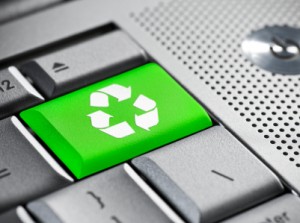 This is an incredibly competitive, innovative and solutions-based industry, capable of creating the changes necessary to guarantee a sustainable lifecycle for each product manufactured. From our first Guide to Greener Electronics in 2006 to this third Survey in 2011, Greenpeace has seen the industry’s ability to consistently put greener products on the market. We believe the industry has the ability to overcome these existing challenges.
This is an incredibly competitive, innovative and solutions-based industry, capable of creating the changes necessary to guarantee a sustainable lifecycle for each product manufactured. From our first Guide to Greener Electronics in 2006 to this third Survey in 2011, Greenpeace has seen the industry’s ability to consistently put greener products on the market. We believe the industry has the ability to overcome these existing challenges.
That’s an extraordinarily upbeat assessment from a group that isn’t famous for its good manners. Greenpeace is one of those groups that gives even their sympathizers the shakes now and again. There’s an unmistakable tone of smug superiority in their campaigns and their public statements, and they often come across as insufferably self-congratulatory. Their rhetoric is often over the top, such as calling Dell a “bloody marketing machine” for failing to eliminate hazardous chemicals from their products on a previously announced schedule. Greenpeace’s more colorful stunts routinely make the news media. In 2009, the group painted “Hazardous Products” on the roof of HP’s Palo Alto headquarters to punish the company for reneging on a promise to build more environmentally friendly products. Greenpeace members have chained themselves to public buildings, disrupted missile tests on restricted government property, and played chicken with whaling boats (though the group says it opposes violent tactics like that of former Greenpeace member Paul Watson). Greenpeace members scaled a water tower near George Bush’s Texas ranch to spotlight his administration’s environmental policies. They run embarrassing advertising campaigns against companies that don’t subscribe to their environmental orthodoxy.
They’ve also done things that, whether or not you agree with them, take incredible personal courage. Greenpeace volunteers have wrapped their bodies around baby harp seals in Arctic temperatures to protect them from Canadian hunters. Others blockaded the hunters’ ships to give still more volunteers time to douse the seals with green dye to ruin their fur. Those tactics helped effectively end the trade in harp seal fur in Europe in the 1980s. Greenpeace has often suffered for their boldness. In 1985, a Greenpeace photographer was killed when French government operatives blew up the group’s ship “Rainbow Warrior” as it sat in a New Zealand harbor preparing to protest a French nuclear test. Japan has imprisoned two Greenpeace activists on trumped-up trespassing charges after the pair turned over information that documented illegal whale meat sales.
What this is all leading up to is that no one can dispute Greenpeace’s authenticity. Love them or hate them or indifferent toward them, you can’t deny that their environmental cred is sterling because they’ve put skin in the game for 40 years. And the high-tech industry needs environmental cred.
The tech industry’s high electricity and toxic chemical consumption and its products’ relatively short lifespan have made it a target for environmental groups agitating for a more environmentally sustainable economy. There’s a lot of greenwashing going on these days as tech companies try to prove they’re not molesting the environment as they’re going about their business. Journalists and the public are getting more suspicious of environmental claims. Greenpeace is immune to greenwashing charges. The tech industry apparently understands that as much as they might privately loathe Greenpeace – hello Steve Jobs and the HP headquarters staff – the group’s imprimatur carries weight with a public that cares more and more about environmental issues. When Greenpeace and industry have a symbiotic relationship – even an uneasy one – you know the world is changing.



